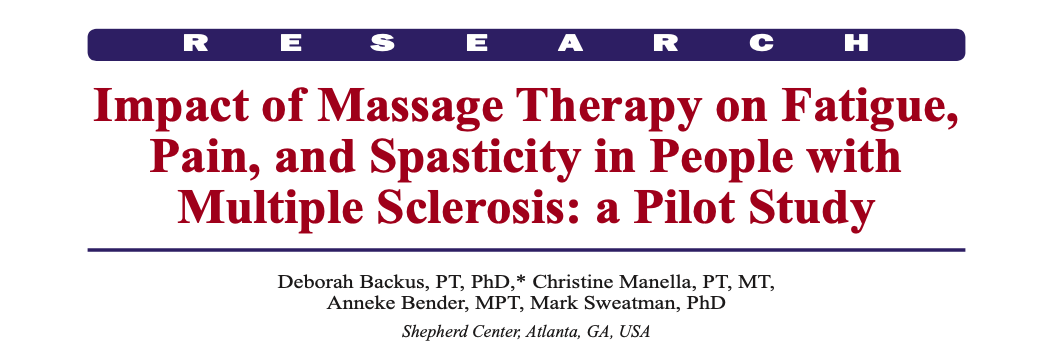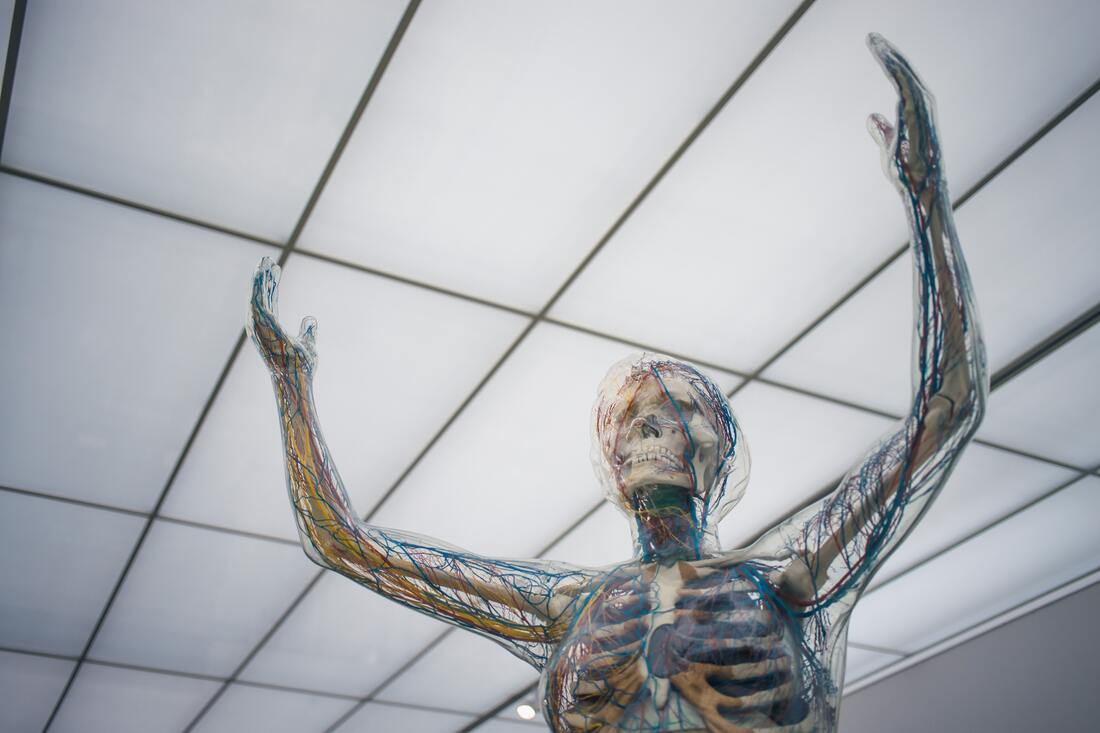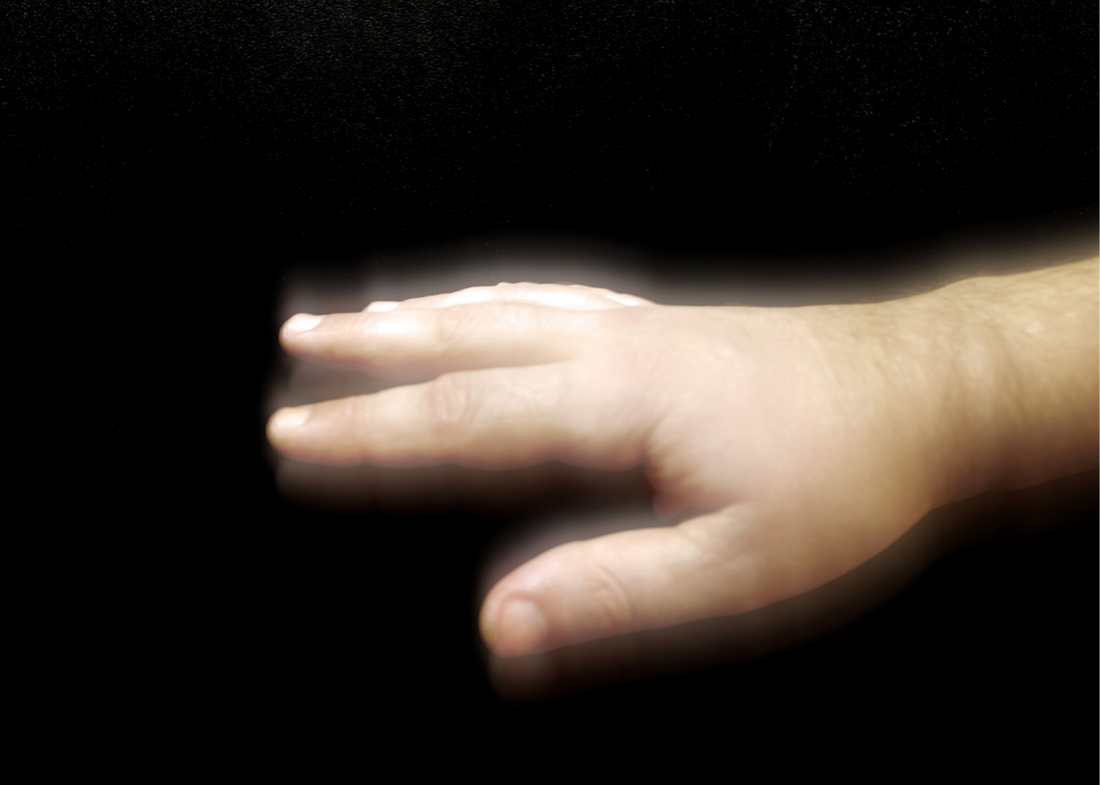|
Predicting how long your body will take to recover from injury or pain can be difficult, because each individual person will have many different factors that can influence their pain.
Your recovery time will depend if your pain is from an acute or chronic issue. We use the terms "acute" and "chronic" to describe your injury or pain type - acute being a new, fresh injury, usually where tissue damage has occurred; and chronic being a longer term condition or pain that continues well after expected tissue healing should have occurred. Acute injuries can include things like ankle sprains, hamstring tears, shoulder dislocations. Usually they happen quickly and are immediately obvious that something is wrong. Maybe you've lifted something too heavy in your gym routine and felt a twinge of pain in your back as a muscle has strained, or you've missed the last step and felt a sharp shock of pain in your hip or knee. High impact blows can also cause acute injuries, like if you have a fall, get in a car accident, or get kicked from a horse. Chronic pain can stem from an originally acute injury. Its common for people to have ongoing pain or sensitivity after an injury that causes a lot of damage. Chronic pain can also be part of many health conditions, like hypermobility and Ehlers Danlos Syndrome, Fibromyalgia, Multiple Sclerosis, and other conditions that affect your nervous system or connective tissue. Chronic pain also describes pain that comes from repetitive patterns of movement or positioning, usually starting as a mild irritation that can build up to be very painful, like De Quervains or "Mummy Thumb" which a lot of new parents experience as intense wrist and thumb pain from holding and feeding their new baby. As a very generalised observation, acute injuries tend to follow fairly predictable recovery pattern as long as normal tissue healing occurs. In fact, the pain of an acute injury can often go away even before the tissue healing has completed, like in the case of a mild ankle sprain where you may be able to weight bear and return to normal movement within a week, even if the tissue around the ankle is still in repair mode. The severity of the acute injury will usually give us an indication of your expected healing time - a mild injury takes a shorter time to recover than a severe injury, this follows our common sense understanding even without medical training. But what about chronic injuries or pain? How can we estimate how long an old injury will take to feel better? And importantly, can we realistically expect long term pain like a very old injury or pain from a lifelong disorder or disease to fully recover? This is where pain starts to become complicated, because in chronic pain patients there are lots of factors involved in the pain outside of damaged muscles, joints or nerves. Chronic pain in one area of your body can lead to pain developing in other areas when your body tries to find different ways of getting things done. If gripping a heavy object becomes painful in your wrists, you may find yourself balancing it on your forearms and tilting backwards from your pelvis instead. As a short term work around this might be ok, but over time you might find yourself with chronic wrist pain AND chronic lower back and hip pain. Unfortunately, if you have a few "layers" of pain areas, this can mean that its likely to take longer to unravel some of the patterns that have lead your body to being in pain. Chronic pain tends to be unpredictable in how long it may take to resolve. For people with pain stemming from lifelong conditions like genetic disorders, autoimmune disease or neurological disorders, the pain is likely to come and go in flares, and our aim for these people is to reduce the severity and frequency of the flares that are a part of their condition. What other factors can contribute to how quickly you recover? Adaptations to movements and positions: Firstly, we need to identify movements or positions you currently do that either exaggerate or relieve your pain. Some of these will be easier to adapt than others - if you notice sitting longer than an hour increases your pain, an easy adaptation may be to get up every 30-60 minutes for a brief stretch. If you spend the majority of your day sitting at your computer, we can look at starting and ending your day with a back extension exercise to decompress your lower back. If we find some movements that relieve your pain, we can look at ways of increasing your time spent doing those movements. We know that we won't be able to change all of the repetitive movements and actions that are needed in your daily life at work and at home, so realistically understanding that some of those things are contributors to your pain means we need to focus on the things we can influence so we can reduce the impact of the things we can't change. There are lots and lots of options for changing some of the movement and position habits your body has built up, and our therapists can help with some suggestions during your appointment. Exercise: Finding a suitable type of exercise for your pain can be very helpful in building strength around the area and in stimulating your body to release its own brand of feel good hormones and neurotransmitters that reduce pain sensations. Exercise might sound very overwhelming to start off, especially if you have a lot of interconnected areas of pain, so our therapists will start you at an appropriate level for where you are at. That might be some mild stretches, a gentle walk or swim, or even a visualisation of doing certain movements. Diet/Nutrition: What you eat influences how your body repairs and recovers. If you have food sensitivities or intolerances this can also effect your bodies inflammatory response - the more inflammation, the more sensitive our nervous system is to pain. If you were already eating a good diet prior to your injury, you are likely in a better position to recover quicker than someone who was eating nutrient-poor food or a diet that caused inflammation. A nutritionist may also be able to recommend supplements that can support your bodies natural healing processes. Fitness & General Health: You may be more likely to have an easier recovery from injury if you were in fairly good health and physical condition before your injury. Your recovery may be slower if you have pre-existing health concerns, including things like diabetes or autoimmune disease. Its never too late to start working towards a healthier lifestyle! Sleep: Good sleep is crucial to good healing. Pain can make sleep very difficult, and this can become a bad cycle of intense pain leading to poor sleep, resulting in feeling fatigued, which causes pain to increase, and so on. Breaking this cycle and getting some proper rest can help with recovery. Using extra pillows to support your body may allow you a longer and deeper sleep. There are also lots of great sleep apps or meditations that some people find useful in falling asleep or getting back to sleep if you wake up in the night. Speak with a nutritionist or pharmacist about night time supplements that can help aid with sleep. Nervous System Health: Chronic pain is often just as much about your nervous system as it is about your musculoskeletal system. This means if you are highly anxious, stressed, depressed, or just have a lot on your plate right now, that your pain levels may be higher than normal. The nervous system controls your entire body, so while we're not saying "your pain is in your head, you're making it up!" what we are saying is that if your nervous system is working overtime then its much more likely that your pain will be noticeable even in response to small actions. Think of it like a kettle that has just boiled, it takes much less time to reboil the kettle because its already hot. The nervous system is similar, it will take much less action for your nervous system to turn up the volume on your pain because its already on high alert. Finding ways of supporting your nervous system is crucial for long term chronic pain conditions. This is also why medications for anxiety and depression are often prescribed for people with ongoing pain. There are lots of natural or herbal supplement options available through Naturopaths and health stores. Setting a nervous system health routine for yourself is also a hugely valuable part of managing stress and overwhelm, and this might include things like mindfulness, meditation, relaxation, affirmations, or anything else that helps you to tone down nervous system activity. Self Care Tools: Treatments with your practitioner are great, but having the tools and know-how to apply treatment principles at home goes a long way to helping you take charge of your recovery. We can teach you how to use a range of tools for releasing tight spots in your body so that you have some tricks up your sleeve for between treatments. Treatment: Get the type of treatment that your body responds to. Some people respond best to hands on treatments like massage, cupping and dry needling. Some people go better with active exercise based treatments. Our therapists can advise you of the treatment types that have been reported to work best for your type of pain, but ultimately each individual body can react differently, and we'll work towards finding the best combination of treatment techniques for you. Be aware that trying too many treatment types at once for the same issue can make it very difficult for any of your health practitioners to determine which treatment is effective. This is also why we'll often pick a small number of Myotherapy techniques to use in each treatment, because if we use absolutely everything we know all at once, its very hard to know what worked and what didn't. Go into your first treatment expecting that it might take your body a little while to start making long term changes, especially if your pain has been there for a long time and if repetitive movements and positions seem to be a big part of your pain hanging around. Try your first appointment with us for $97 (normally $115) Book an appointment with us now. Multiple Sclerosis is a many, many layered condition that has a long list of symptoms, including pain, fatigue, and weakness. There is currently no cure for MS. But just because there is no cure, does that mean there is nothing that can be done to help reduce these symptoms and maintain muscle health? From clinical experience, I've found massage and a variety of myotherapy techniques to be incredibly useful for patients living with MS. You can read more about my clinical experience with treating MS in this blog. I've been running for The May 50K during COVID19 isolation to raise funds and awareness for MS, so I thought its only fitting that I write up a bit of a literature review on the research! You can read the article here for the full study details, as published in the International Journal of Therapeutic Massage and Bodywork in December 2016. What does the research say specifically about massage therapy and MS?
There are a few things to keep in mind when we read this study. Firstly, manual therapies are hard to study, because the techniques used are almost always different every single treatment. As experienced therapists, we select techniques that are the most relevant to the patient each time they come for an appointment, and our selections are based off what we assess in the consultation, as well as what the patient agrees to on the day - for example, some days a deep pressure trigger point treatment can be tolerable and helpful, and other days it may feel too much. Secondly, Multiple Sclerosis affects people in widely different ways. There is no one "best" treatment technique for MS, and the symptom types, areas and intensity are vastly different from person to person. Keeping that in mind, lets have a look at how these researchers completed their study, and what they found. How did they design a study for massage therapy for Multiple Sclerosis? A specific massage sequence was designed for the study. This sequence was to be followed to the letter for every patient at every session, regardless of the symptoms on the day. This isn't an ideal way of providing a treatment in a clinical setting, however in a research setting its important to be able to make the tested treatment or therapy able to be reliably the same for every subject in the study. The sequence involved a full body massage therapy routine which included gliding strokes, kneading, cross fibre friction, and trigger point treatment. The 24 participants were scheduled for a weekly one hour treatment using the specific massage routine for 6 weeks. If a participant missed a scheduled treatment, they aimed to reschedule it within a week, so that each participant received 6 identical treatments over the course of no longer than 8 weeks. How did they measure and assess it? Five measurement scales were used to assess the outcomes in a variety of symptoms. The participants recorded scores for
What did they find out? The results overall suggested that massage therapy was a safe and useful tool in providing relief from fatigue and pain, and improving mental health and general quality of life. Fatigue - The MFIS indicated that 22 out of 24 participants reported decreased fatigue scores. There was a significant correlation between fatigue decreasing and pain decreasing. Spasticity - 19 out of 24 participants completed the MAS spasticity evaluation, and of these, 16 reported experiencing spasticity symptoms ranging from slight to considerable increase in muscle tone. There were no significant changes in spasticity after the end of the 6 week treatment period. Pain - On average, participants reported a significant 18% reduction in pain on the MOS Pain Effect Scale. The reduced pain scores correlated with improved mental health scores. Mental Health - A significant increase in the total scores on the MHI indicates overall mental health improvement. A small number of participants did not improve on some subscales, such as anxiety (3 participants) and depression (1 participant) Quality of Life - Overall, the quality of life scores on the HSQ showed improvement. Emotional and Social subscales showed more improvement than Health and Physical. The results indicated that as fatigue and pain decreased, measures of quality of life increased. Can we help you? Do you have MS and want to discuss treatment options? Our clinic is temporarily closed due to COVID19, but we expect to reopen by June. Check our availability on our online bookings page for updates. Are you receiving assistance from MS Employment Services? You may be eligible for funded Myotherapy treatment through your Occupational Therapist. Contact your OT to see if you can apply, and they will forward us the documents to begin the process for you. Do you have MS, you're currently working or seeking work, and you're not receiving assistance? Check the MS Employment Services website to see if you're able to receive support. We might not be able to see our MS patients face to face right now due to Covid19 restrictions, but thats not stopping us from helping in other ways!
We've created a team in The May 50K, which is a fundraising challenge to raise much needed funds for MS research. Our team is called Myotherapists for MS! The goal is to run 50km throughout May and raise donations and awareness to help support research for Multiple Sclerosis. What is Multiple Sclerosis or MS? Its a neuro-immune condition where the persons own immune system attacks their nervous system. It targets the myelin sheath, thats the insulating barrier between the nerve and its surroundings. Without myelin sheath, the nerve can't function in its usual way, and scarring (sclerosis) of the nervous system occurs. The normal nerve messages can get mixed up or lost, and it can cause a huge range of issues including:
Who are the Myotherapists for MS? Our team was created today by Mel and her good friend and mentor, Rhianna Bridgett. We're aiming to get a few more Myotherapists on board to help us stay motivated and to meet our goal of raising $1500 for MS. So far, the team includes:
Want to support us? Firstly, we all know and appreciate that these are hard times, the like of which most of us have never lived through before. So while donating is awesome, and we love and appreciate you if you are able to contribute a donation, its not the only way you can help our cause. What we would love to see more than anything is your support, inspiration and motivation! Basically - Keep us accountable! Make sure we complete our goals! Follow our journey on Facebook and boost our team morale by liking, loving, laughing at our posts, leave us a comment of encouragement, and share our achievements. Can you donate? If you can, we appreciate your support!! Want to know what your donation can achieve?
You'll also get a receipt automatically emailed out to you for tax time for any donation over $2 so you can claim the deduction. Go team!! Have you or someone you love been diagnosed with multiple sclerosis? The symptoms of this condition can range from uncomfortable to debilitating. But the good news is that manual therapy techniques that fall under the scope of myotherapy can help to alleviate some of these symptoms. Let’s take a look at how myotherapy can help with multiple sclerosis. What is multiple sclerosis? Multiple sclerosis, or MS, is an autoimmune disorder that affects the central nervous system. ‘Sclerosis’ means ‘scars’, which occur throughout the central nervous system. These scars interfere with the nerve impulses within the brain, the spinal cord and the optic nerves. Because the scars can occur anywhere throughout the central nervous system, different symptoms can manifest. Over 25,000 Australians have been diagnosed with MS. Most are diagnosed between the ages of 20-40, but it can occur in people who are younger or older. Women are far more likely to be diagnosed with MS. What are the symptoms of multiple sclerosis? Because multiple sclerosis can occur throughout the nervous system, there is a wide range of symptoms that people with MS may experience. No two cases are the same. However, symptoms will typically fall under five main categories:
How can myotherapy help with multiple sclerosis? This can really depend on the primary symptoms you’re looking to manage. However, myotherapy has a diverse range of tools and techniques that may help to minimise symptoms related to motor control, fatigue and neurological issues. Some of the symptoms myotherapy may help to relieve include:
Massage and multiple sclerosis One of myotherapy’s tools that has some promising research to back it up is massage therapy. There have been several small studies into the benefits of massage therapy for MS. They found that massage therapy was able to relieve pain, fatigue and quality of life. One study found that massage was more effective at relieving symptoms compared to exercise therapy. It also suggested that combining massage with exercise therapy could have even greater benefits. Managing multiple sclerosis symptoms with Simple Wellness Myotherapy Here are Simple Wellness Myotherapy, we have had patient outcomes such as:
Every case of MS is unique, so we cannot guarantee that you will achieve the same results. But we can say that our practitioners are experienced when it comes to MS, and will go the extra mile to help you find as much relief as possible. Simple Wellness Myotherapy also works as a healthcare provider for those receiving employment assistance through MS Employment Services. If you are receiving employment assistance, you can have a chat with your Occupational Therapist to see if myotherapy can be incorporated into your package. Ready to make a booking? Click here to visit our booking page. Tremors are a common and frustrating symptom for people living with Multiple Sclerosis and other neurological conditions. They are involuntary muscle contractions which can cause shaking and unsteady movement. I recently spoke with a patient who had left her doctors appointment feeling very angry and insulted when her tremors were described as "Intention Tremors", because the message she was hearing was "you are intentionally causing these tremors". She immediately thought "no! Not another doctor telling me this is all in my head!" But Intention Tremor is the name of a type of neurological tremor, and although the name may sound like you have control here - or that it is your intention to cause the tremor - this is not the case. What is Intention Tremor?
Intention Tremors occur during movements that require coordination between your visual input and the movement of your affected limbs. For example, when you reach for a cup of coffee, firstly your eyes focus on the cup. Then your movement course to reach out your arm, open your hand and grasp the cup is plotted and coordinated by your cerebellum. It continually adjusts your course of movement by getting feedback from your eyes telling you how close you are to your coffee cup, and proprioception of your hand (that is, where you perceive your hand to be in relation to the rest of your body) With Intention Tremors, the nerves and brain areas that control the motions of moving your arm and hand are unable to produce smooth, fluid movements. Instead they get stuck in a jolting rhythm of muscle contractions. The involuntary contractions tend to become increased as you get closer to your goal - so the closer your hand gets to grabbing your cup, the more it shakes. When sitting still, the tremors can be minimal or completely stop. Have you spoken to your GP about your tremors? If you haven't spoken with your GP, please make a time to talk to them, especially if you're unsure if they are an indicator of a neurological condition. If you already have a diagnosis of a neurological condition, like MS or Parkinsons Disease, and if the tremors are a new symptom, its important to let you doctor know that you're experiencing this. Tremors don't always happen because of neurological diseases. They can occur due to stress, fatigue, vitamin deficiency, low blood sugar, or after an impact to your head like a fall, car accident or concussion, or after a brain injury like a stroke. You should always have a doctor investigate these symptoms. Can Myotherapy help Intention Tremors? We can't offer a cure for tremors. What we can help with is muscle pain, fatigue and tension that is often associated with tremors and neurological conditions. Myotherapy can be a great complementary therapy as part of a holistic treatment plan, but shouldn't be used as your only form of treatment. You can book an appointment time online or email us at [email protected] if you have questions before making a booking. |
Meet Our Team
We have a team of great practitioners available 7 days a week at our Rowville clinic. Archives
July 2024
Categories
All
|
Got a question about Myotherapy?
Contact Mel by phone, email or Facebook
|
Simple Wellness Myotherapy & Remedial Massage Clinic
Shop 12B 150 Kelletts Rd Rowville VIC 3178 |
Phone us on
03 8204 0970 |




 RSS Feed
RSS Feed